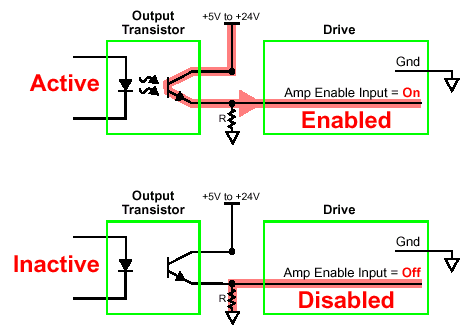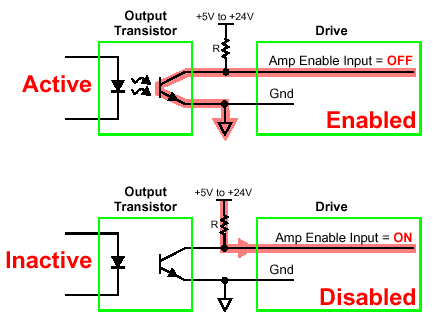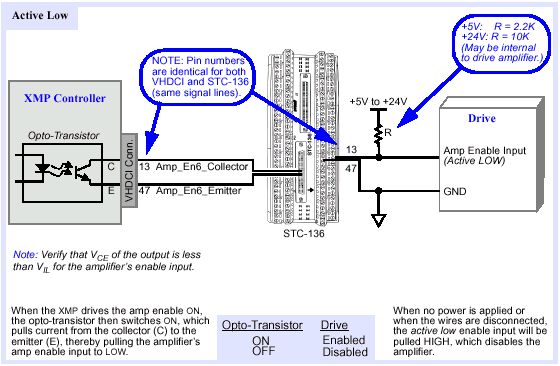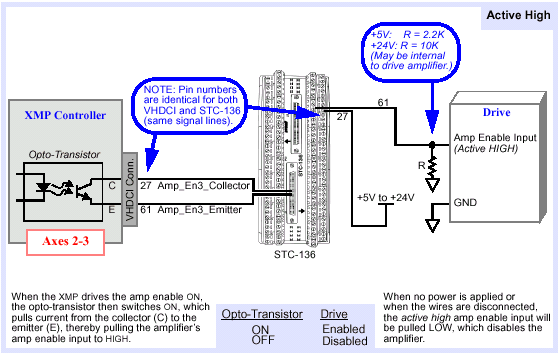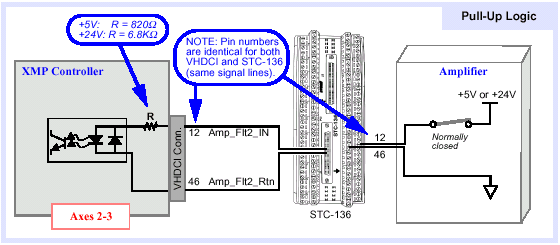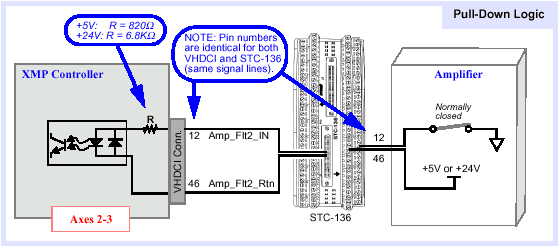| CHAPTER 3 Configuring An XMP-analog Motion Control System | ||||||||||||||||||||
Drive Enable WiringDefinition of Fail Safe WiringOne of the first questions motion system designers must address is how to wire the AmpEnable to a drive for fail safe operation. A fail safe drive enable circuit is one that is disabled when either the controller loses power or control lines are cut. MEI strongly recommends avoiding any configuration where loss of power leads to a runaway axis. In many cases, the use of automatic, dynamic braking is recommended for high-mass, high-speed loads. Wiring and Drive BehaviorThe actual behavior of a drive enable circuit depends upon two factors:
Two examples of fail safe wiring are shown below. They do not represent the only correct way to configure drives, but they can be used as guides. Example 1: Active HighIn the case of an active high drive enable input, the drive is "enabled" when the Amp Enable signal is high. The diagram below shows how to connect a fail-safe circuit. Normally, the controller's output transistor is inactive. When the transistor is inactive (OFF), the resistor pulls Amp Enable Input to ground, disabling the drive. When the transistor is active (ON), the Amp Enable Input is pulled up to +5V or +24V, enabling the drive. Example 2: Active LowIn the case of an active low drive enable input, the drive is "enabled" when the Amp Enable signal is low.
The diagram below shows how to connect a fail-safe circuit. Normally, the controller's output transistor is inactive. When the transistor is inactive (OFF), the resistor pulls the Amp Enable Input up to +5V or +24V, disabling the drive. When the transistor is active (ON), the Amp Enable Input is pulled to ground, enabling the drive. Setting Amp Enable and Polarity from Motion ConsoleWhen operating drive amplifiers with Motion Console, you must indicate the following: This is done using the Amp Enable and Amp Polarity parameters within the Motor Summary / Config tab page: 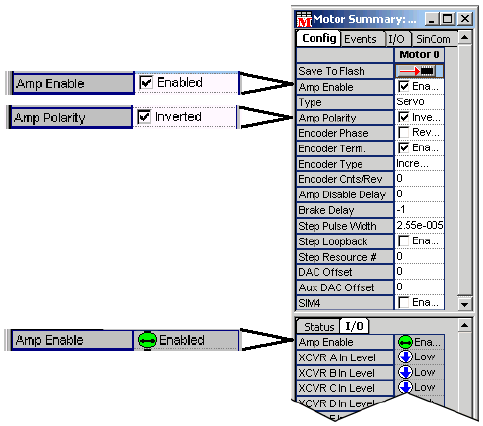 The Amp Enable parameter is for use with drives equipped with enable lines. On such drives, the amplifier responds to commands only when the Amp Enable parameter is set to Enabled. If Amp Enable is not enabled, the amplifier will not respond to commands. For fail-safe operation, the Amp Enable logic is determined by the wiring between the controller and drive. In this case, the Amp Polarity should be set to Inverted. The Amp Polarity parameter tells the XMP controller whether the output transistor should be normally inactive, to disable the drive (Inverted) or normally active, to disable the drive (Normal). Only the "Inverted" Amp Polarity setting supports fail-safe wiring, and is strongly recommended. Amp Enable OutputThe optically-isolated Amp_Enable outputs provide control of the servo amplifier, allowing the XMP to disable the amplifier under fault conditions. Amplifier Enabling from the MPIAmplifier enabling is a crucial safety issue in the design of your application. Your system should be designed to anticipate the possibility of a sudden loss of power and/or connectivity to the controller and/or drive. 
To make a full accounting of your motion system's safety features, you must also address the system's mecahnical dynamics with a disabled drive. (A disabled drive does NOT necessarily mean that all motion will be stopped!) In many cases, the use of automatic, dynamic braking is recommended for high-mass, high-speed loads. Determining whether an amplifier remains enabled or disabled with the controller powered OFF depends upon several factors:
|
||||||||||||||||||||
